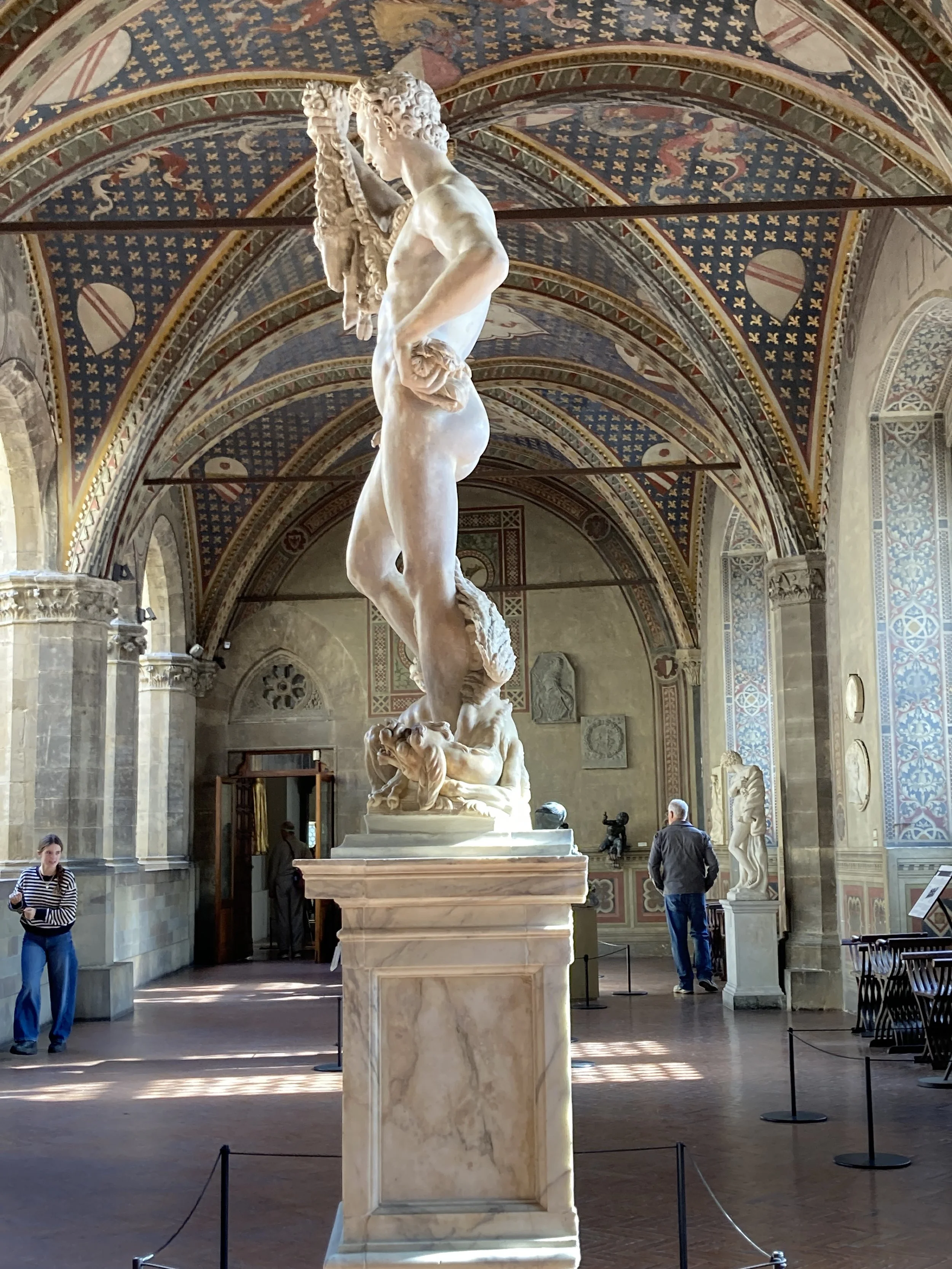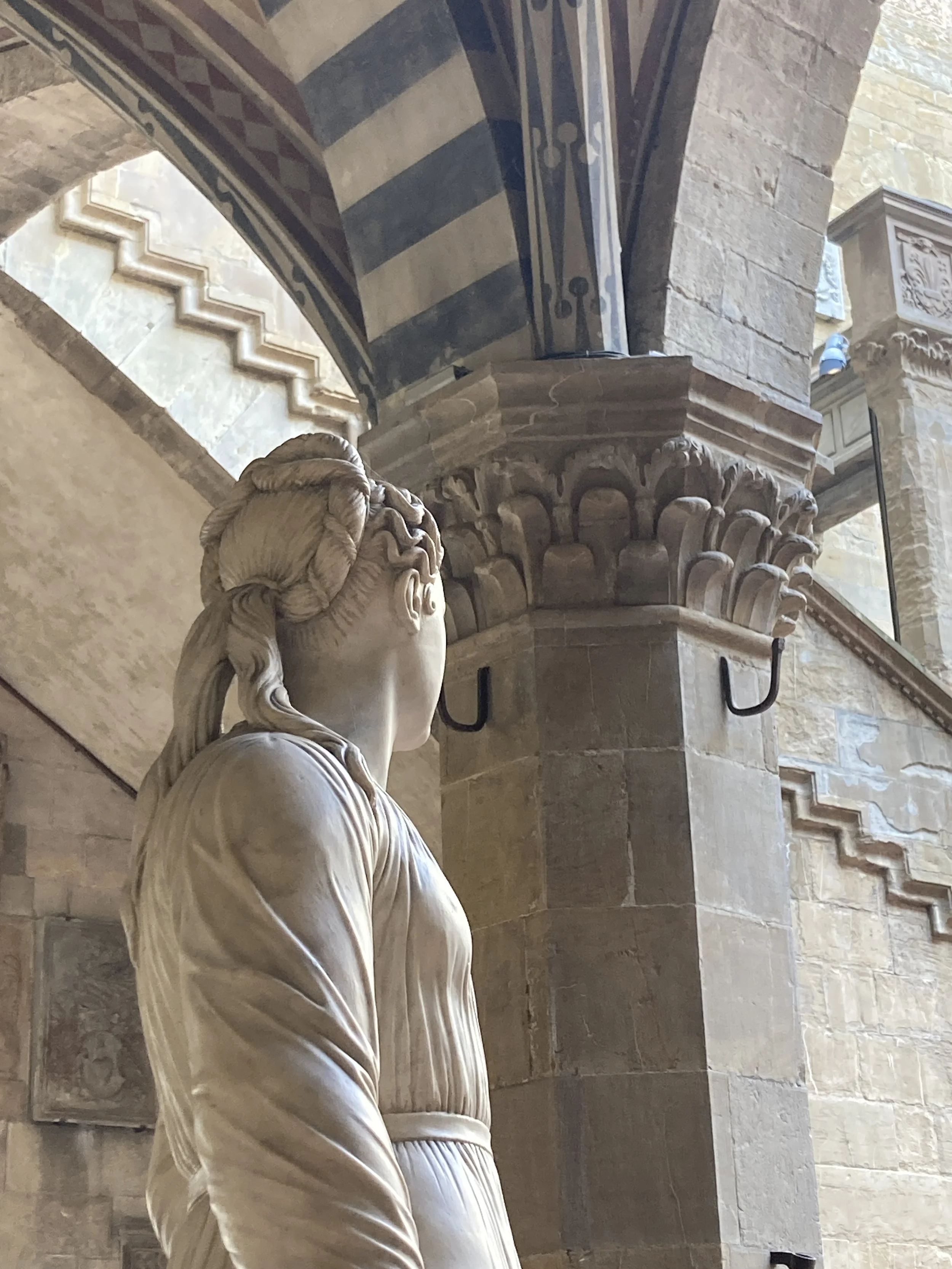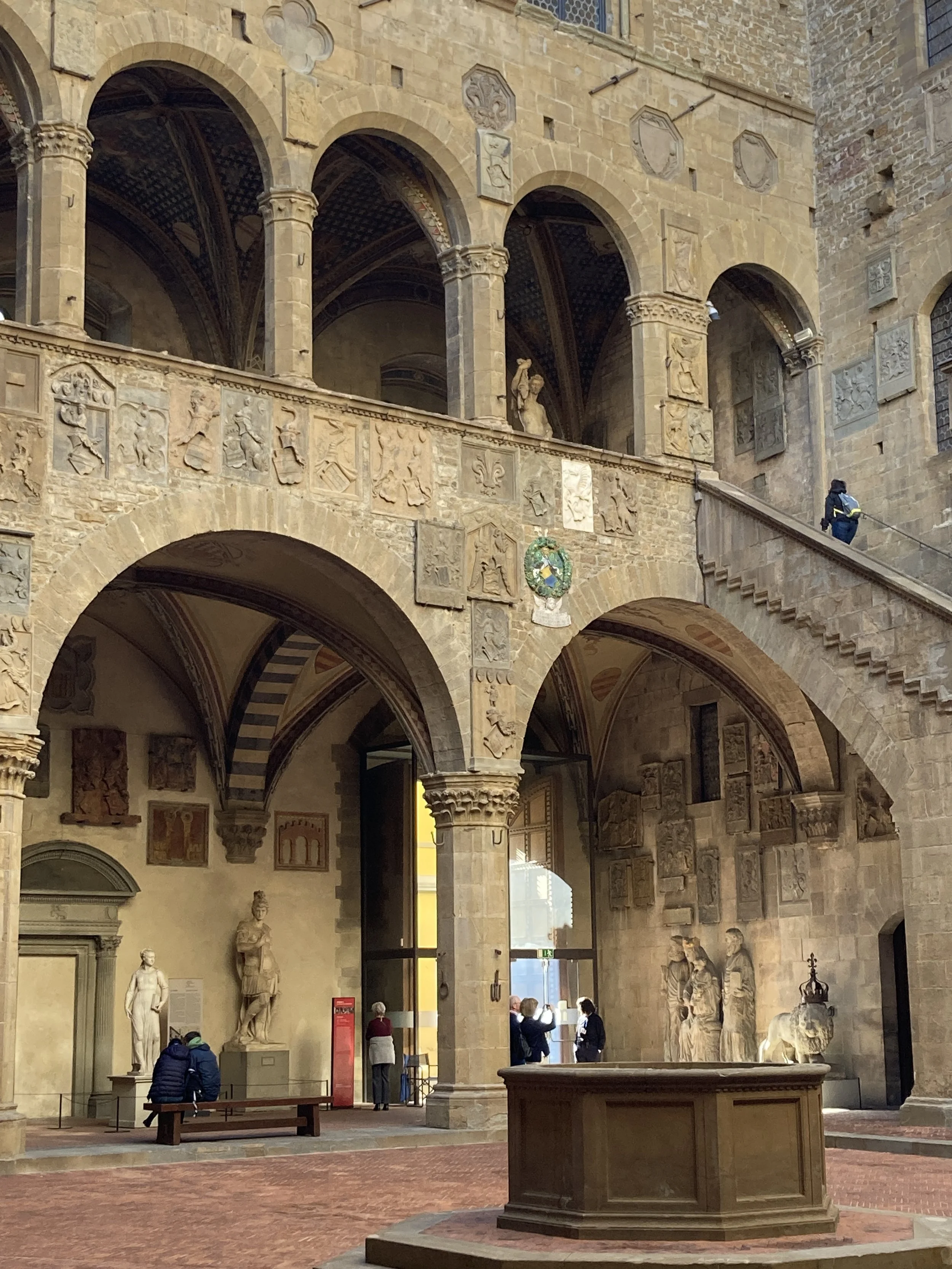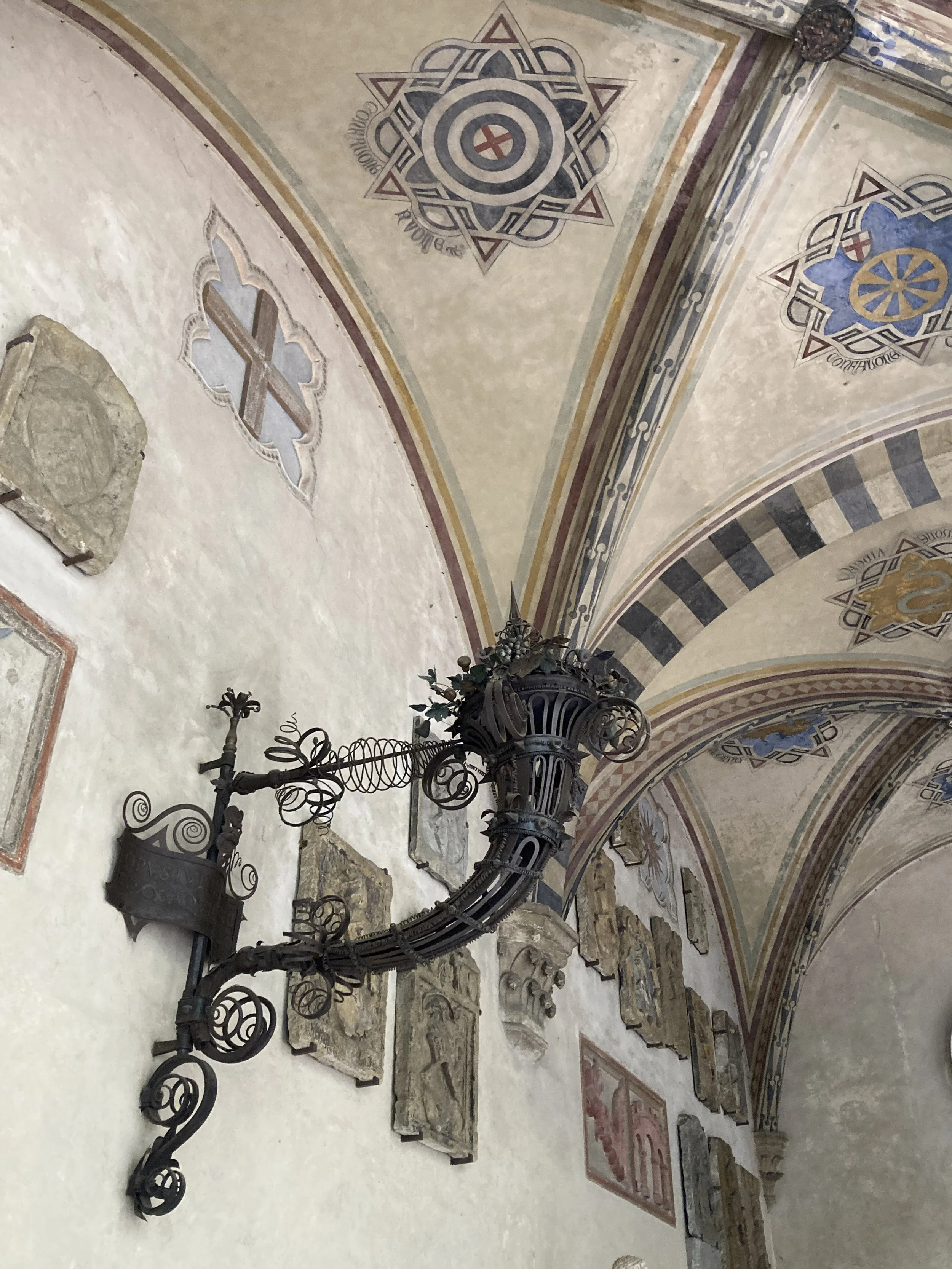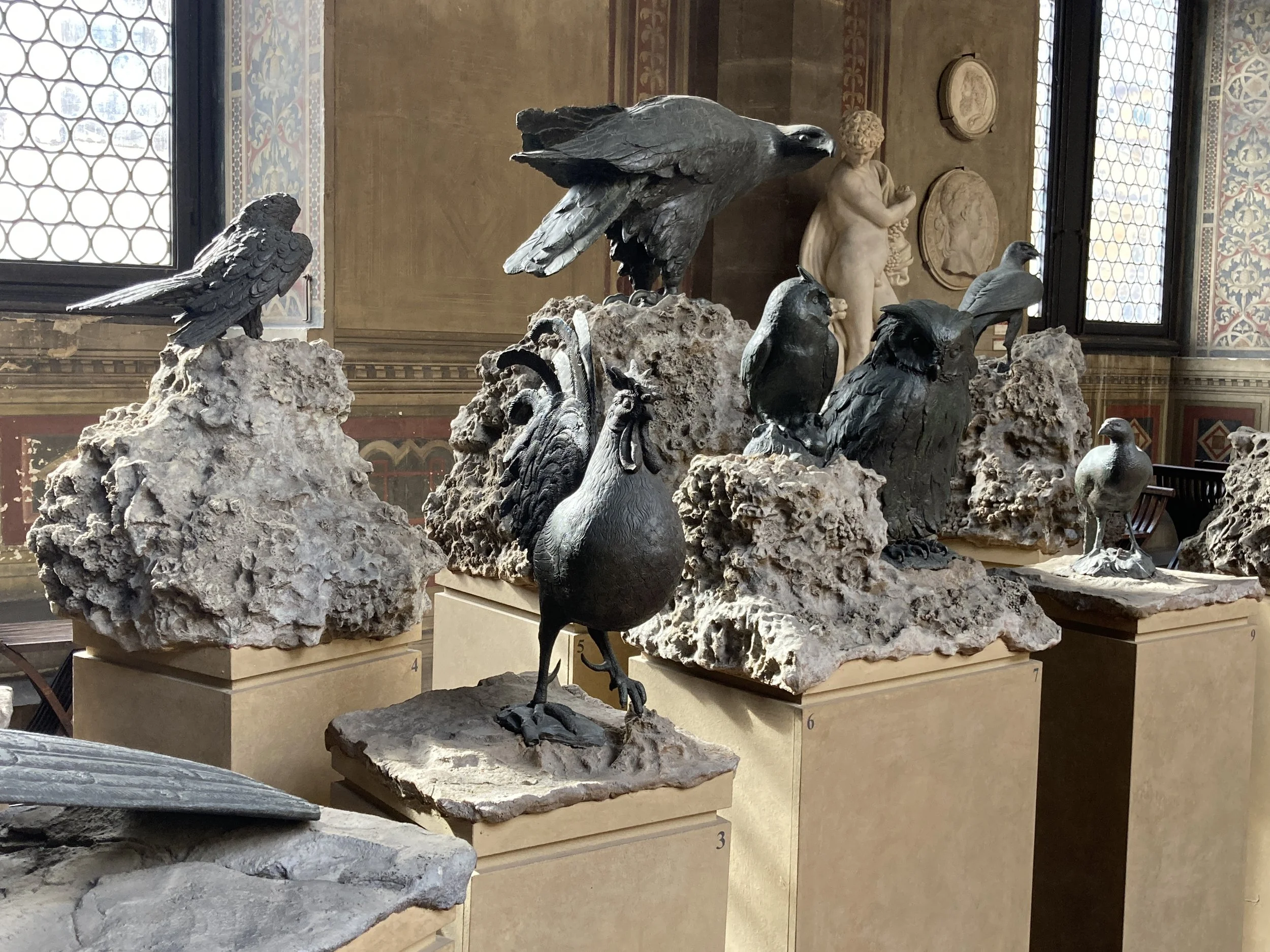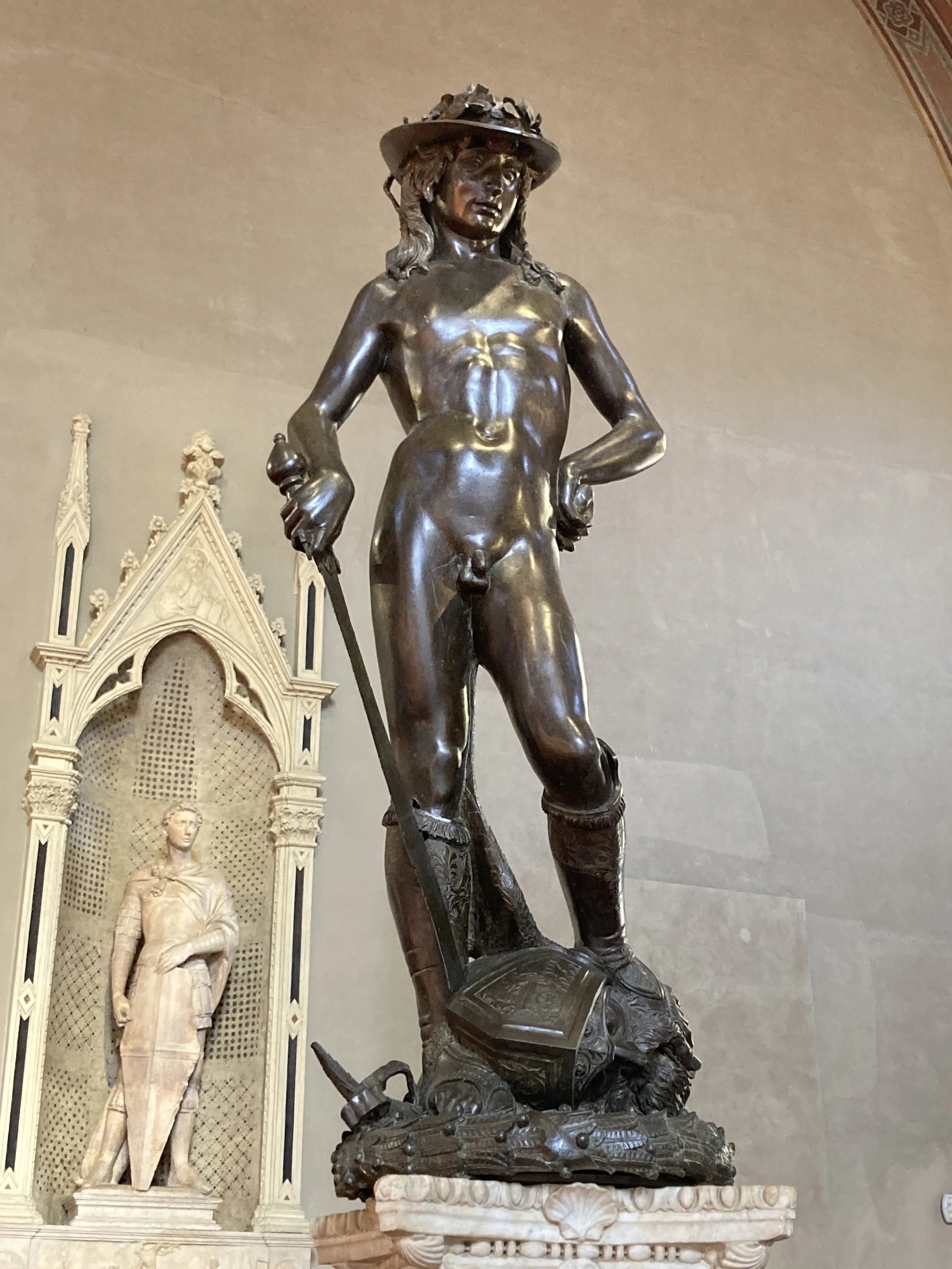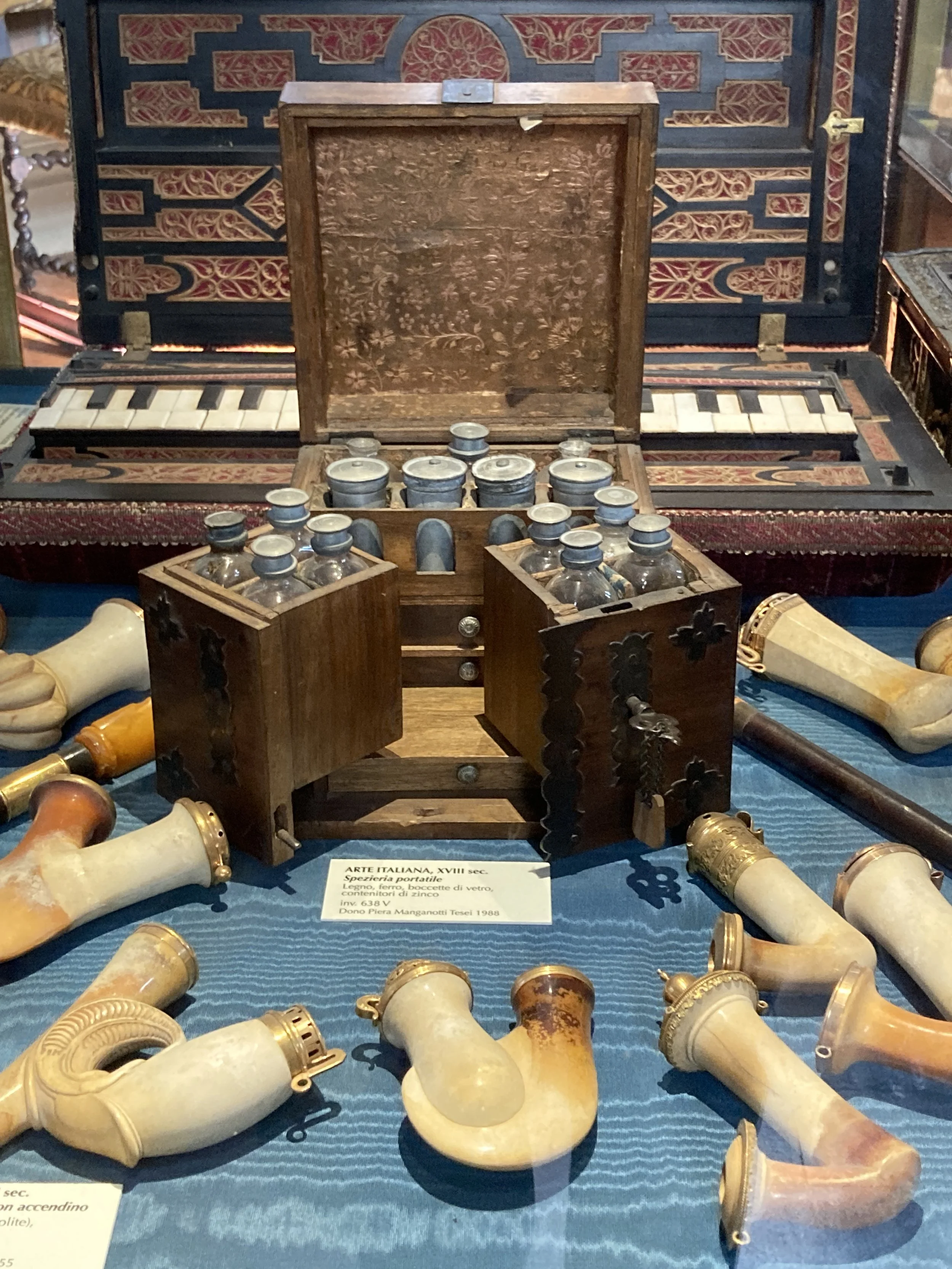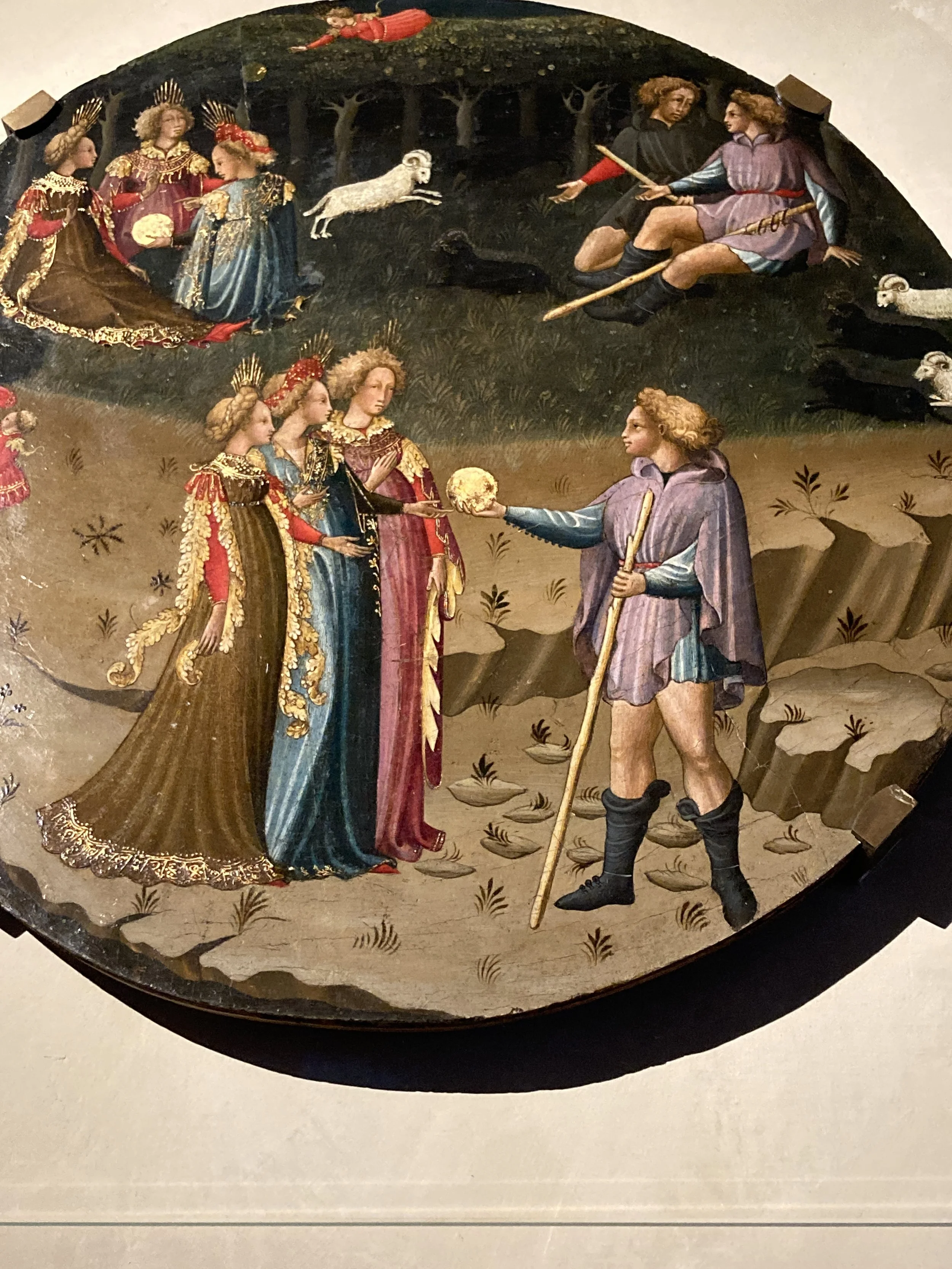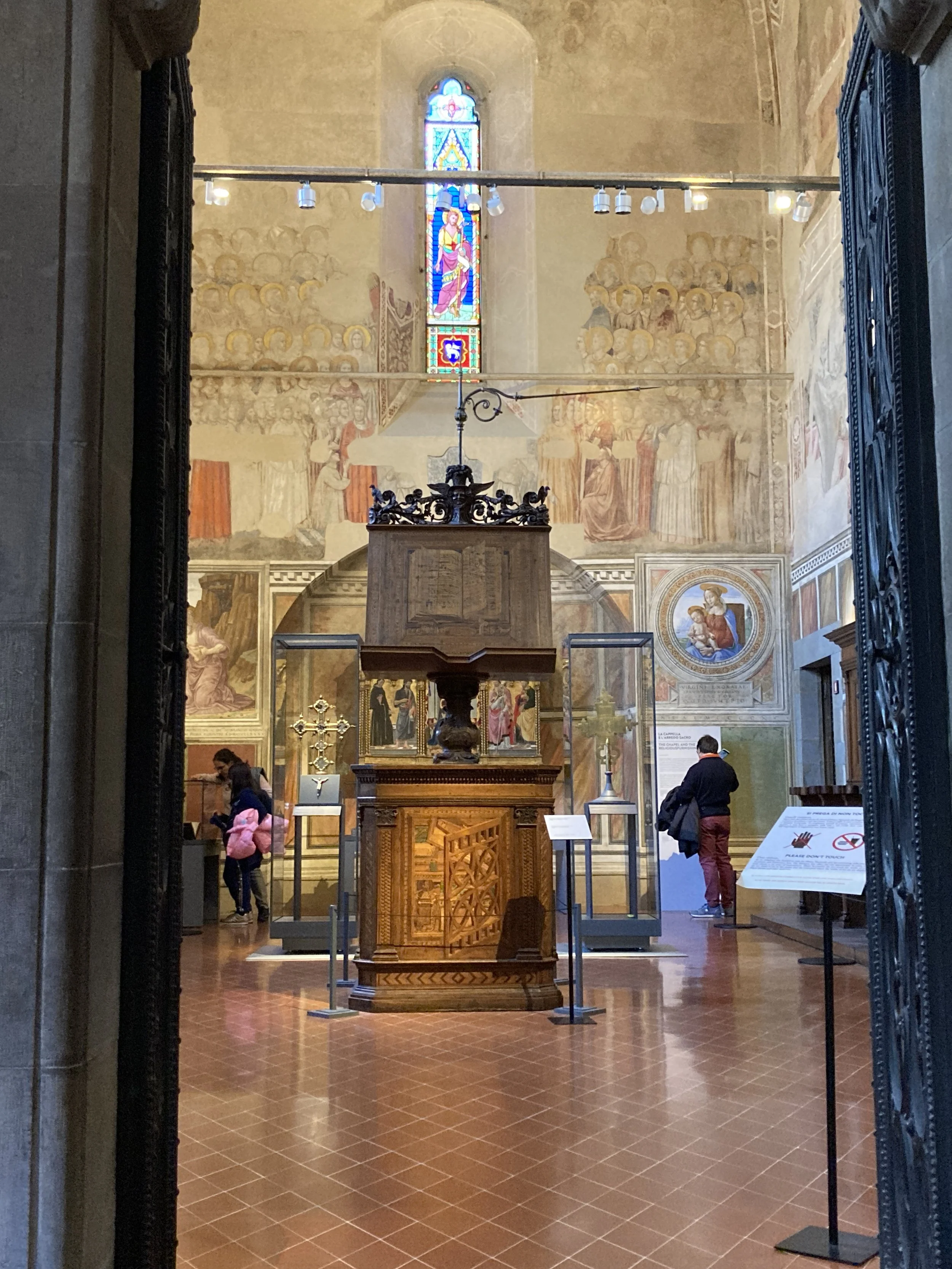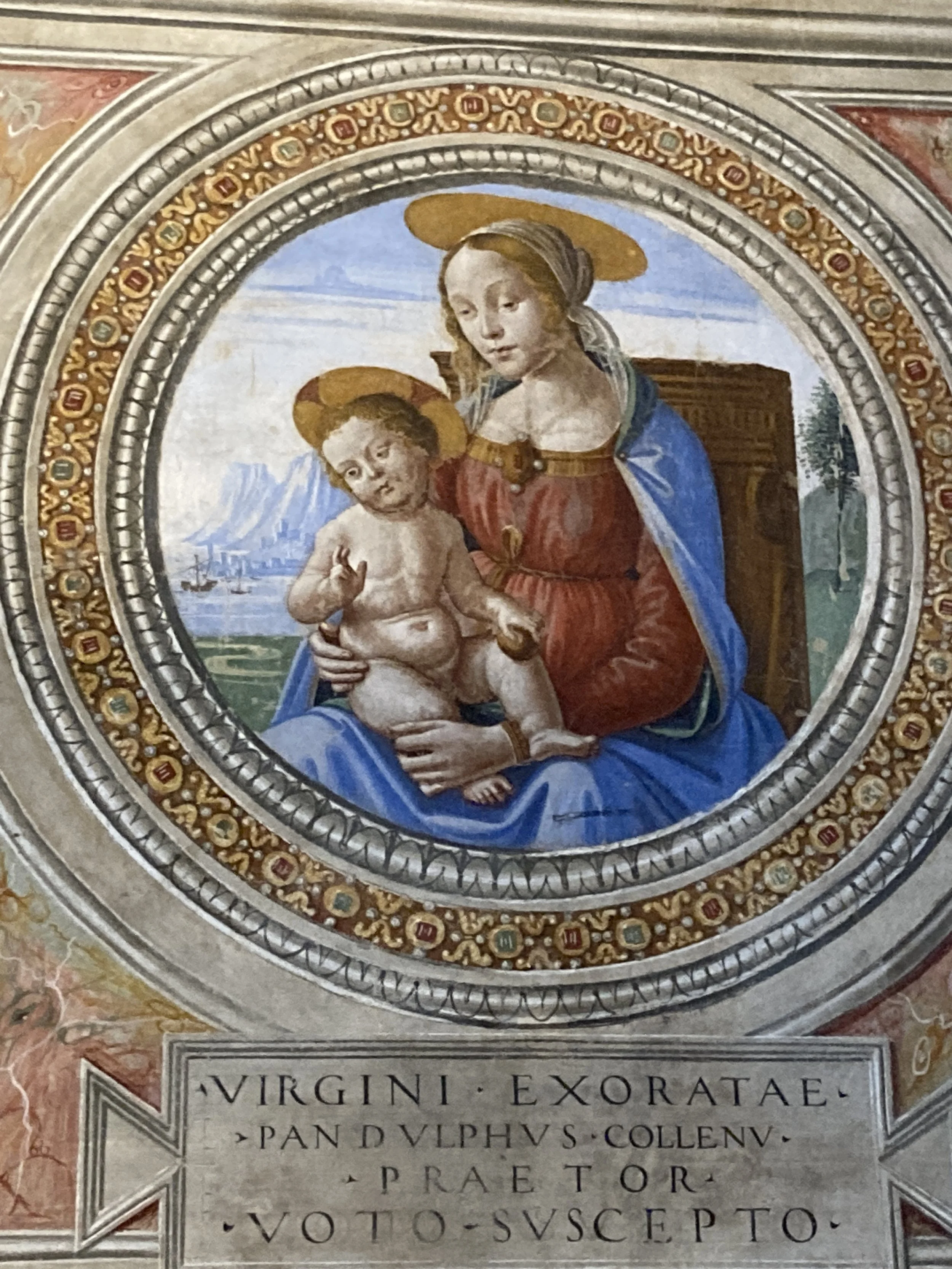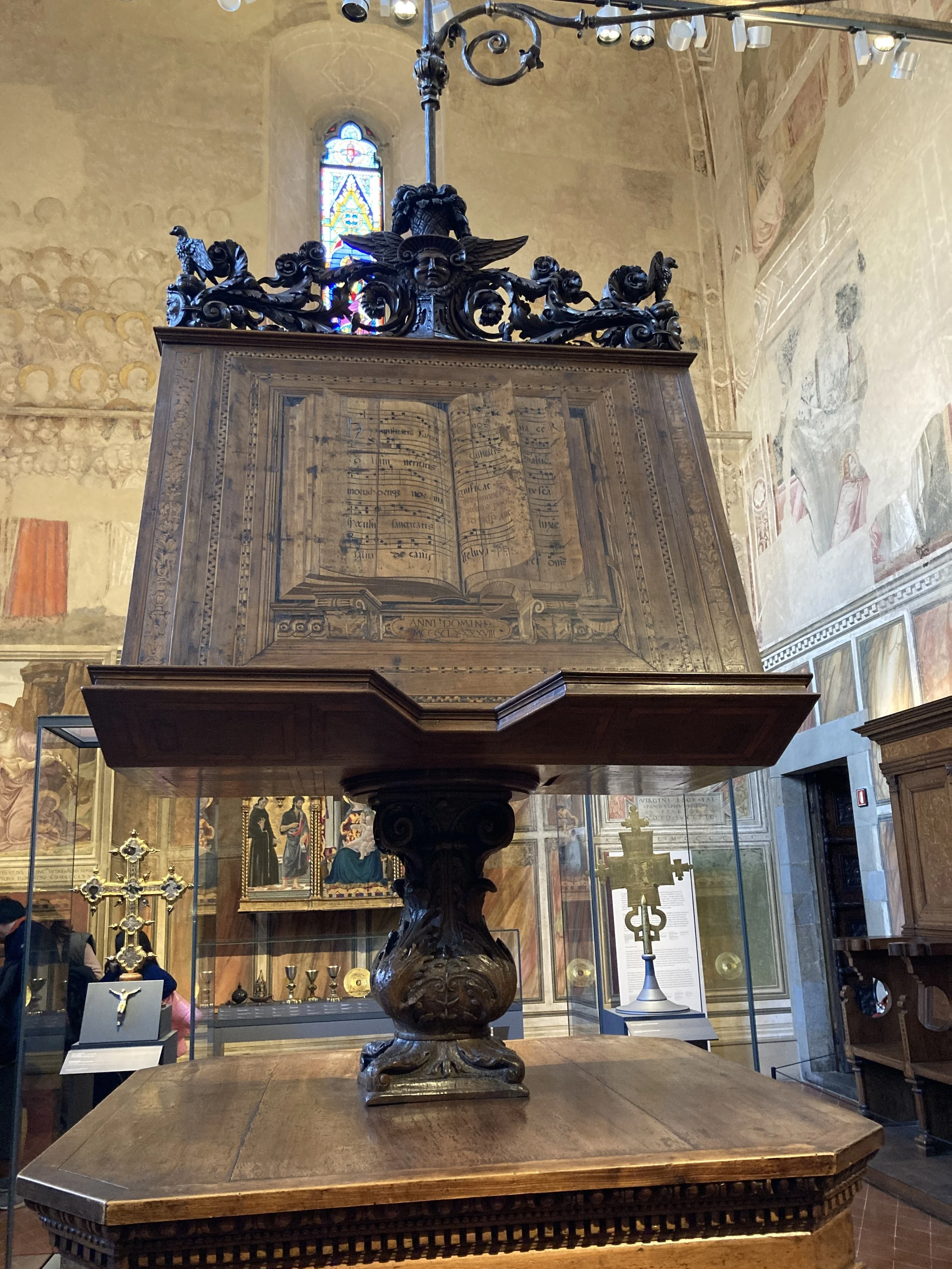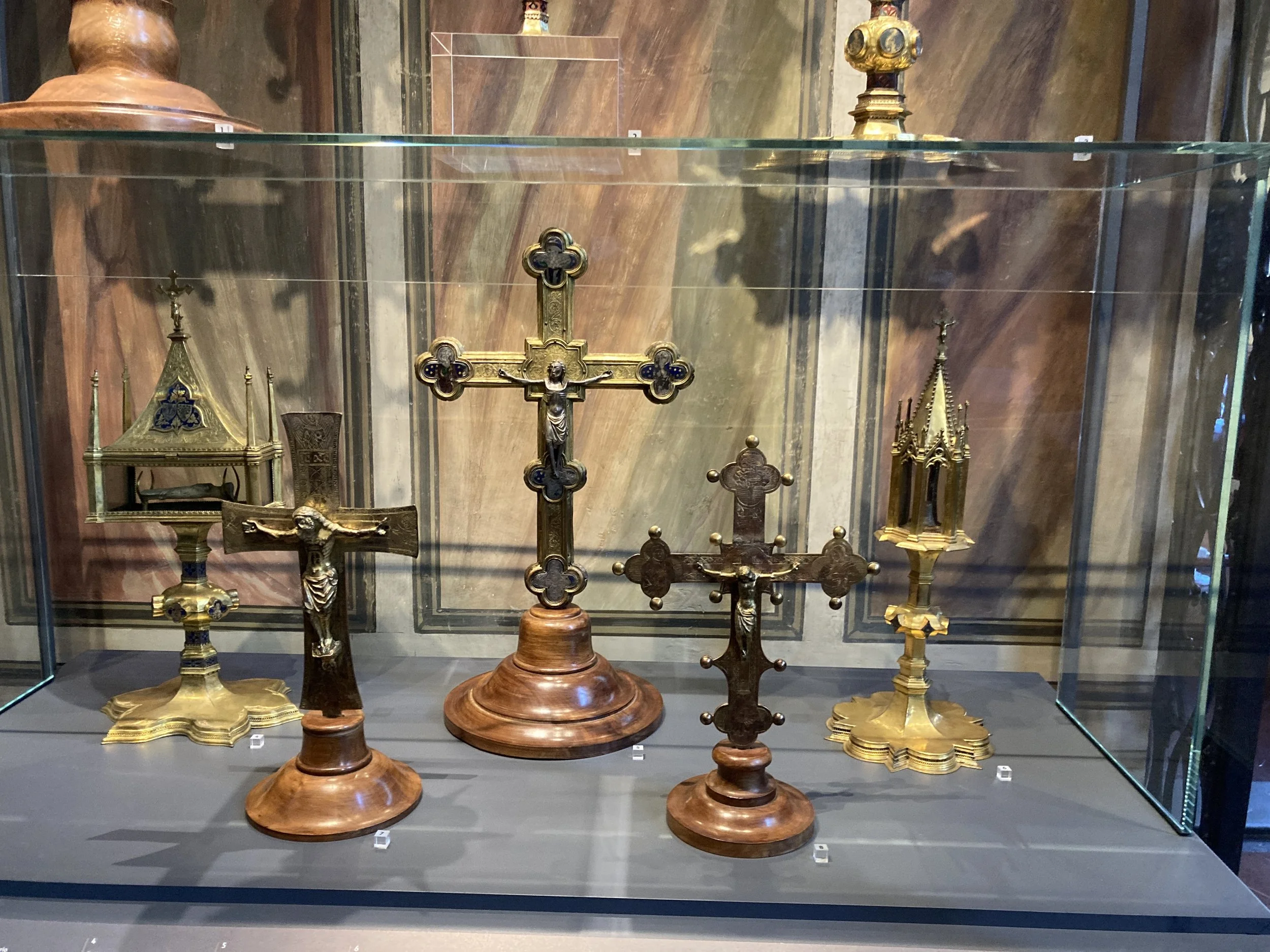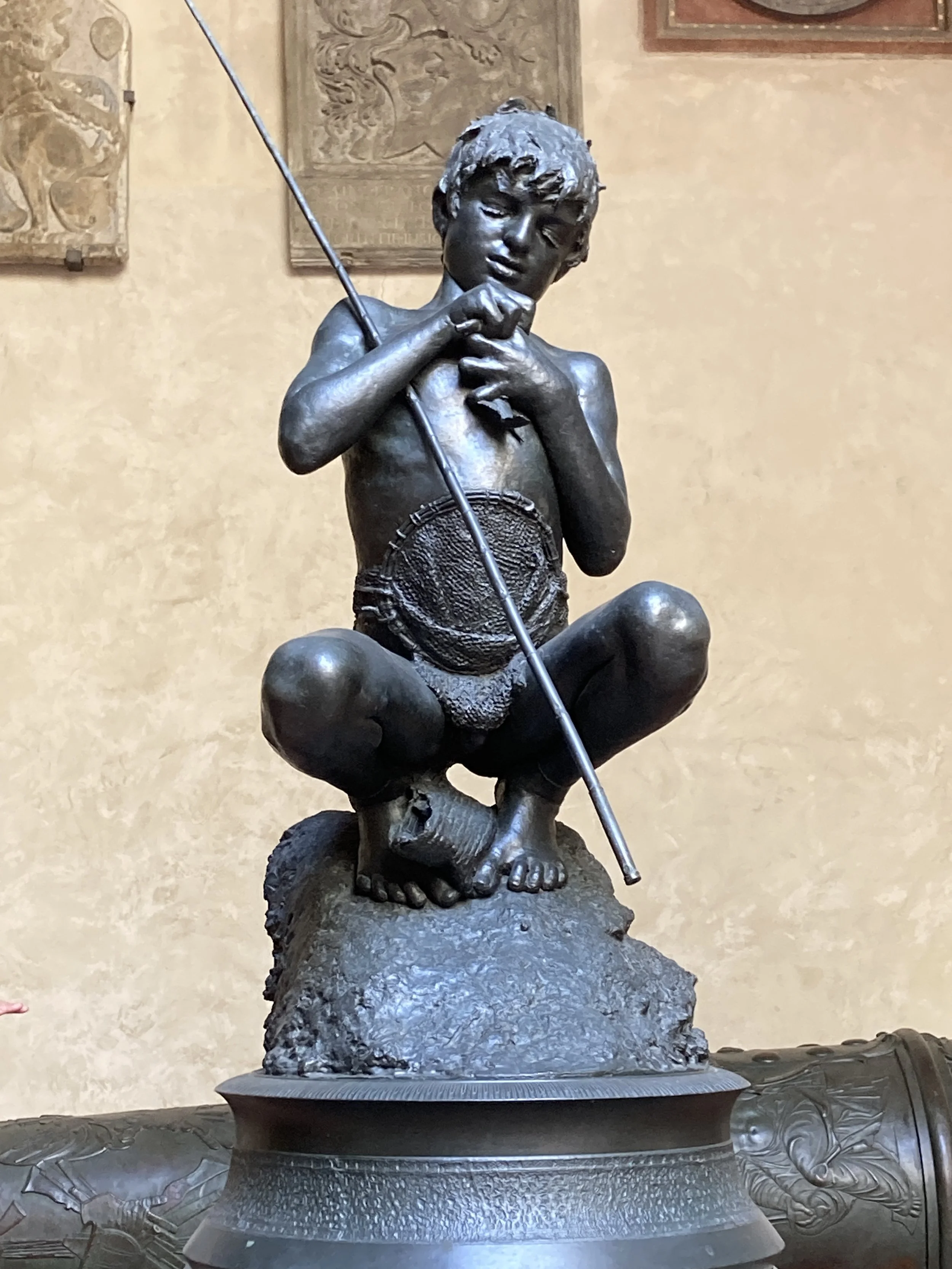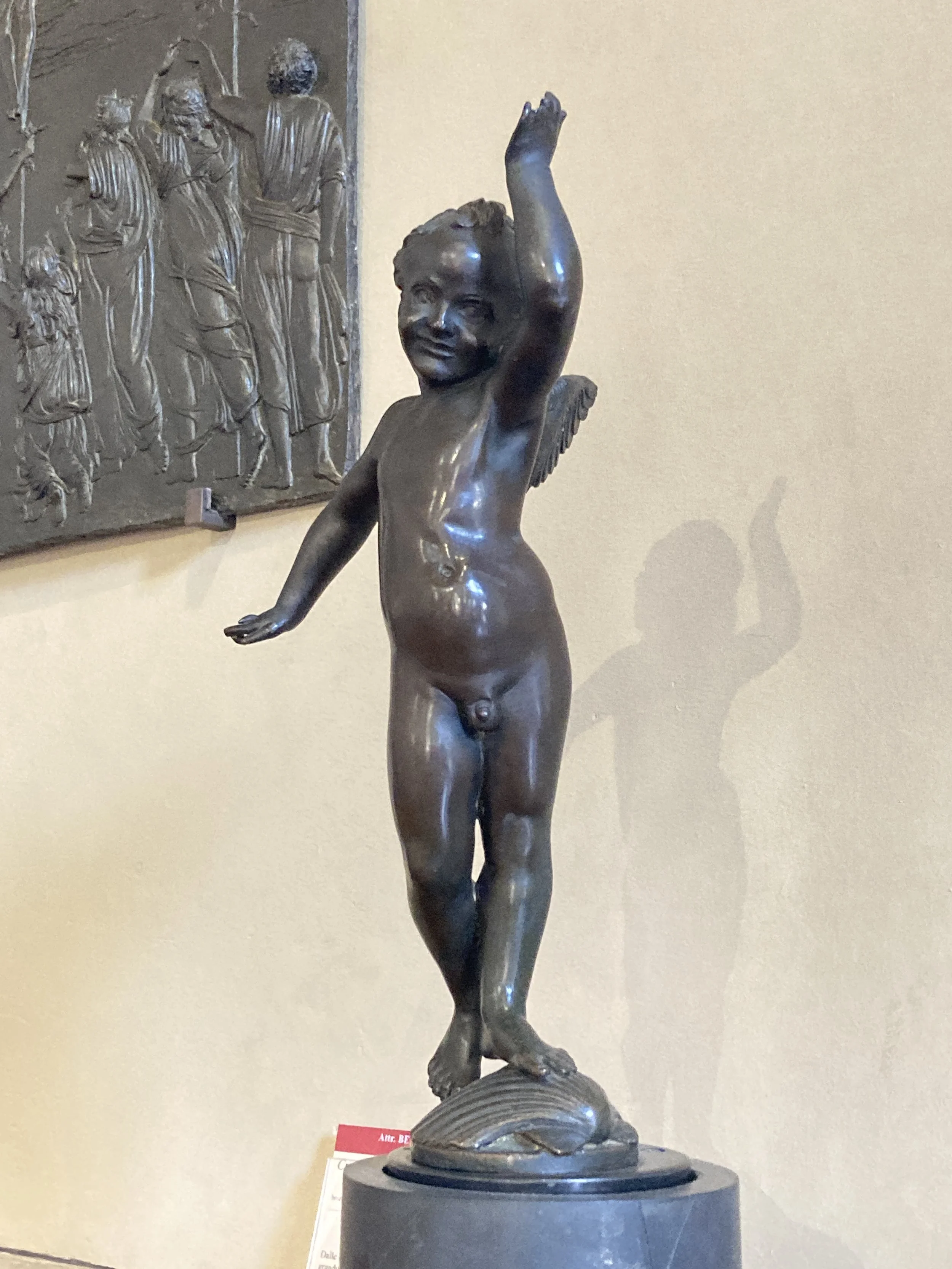Museo Nazionale del Bargello
One of many statues in the courtyard of the Bargello, this one, from 1579 by Domenico Poggini, is particularly lovely
I could spend the next 20 years in Florence and still not have studied all the art that can be found there. There is so much to experience - in public buildings, palaces, churches, and museums - that it can be overwhelming, especially if trying to see as much as possible on a short visit. How fortunate it is to spend most of the year just an hour or so away in Lucca, making it easy to return over time, taking in a new museum, seeing just a few artistic highlights, or returning to a favorite place.
One place that I have returned to over the years is the Museo Nazionale del Bargello. There are many things to love about the Bargello; it is one of my favorite museums anywhere in the world.
First, the history. Constructed in the 13th century as Florence’s first public building, it began its existence as a place to protect the rights of the people. Over its long history it has served many purposes and experienced many periods of destruction and rebuilding. After its noble beginning, the palazzo was later used as a justice hall and later a prison. Political prisoners were tried, jailed, and executed here up until the late 1700’s when the death penalty was banned. Perhaps the most famous political convict was Dante. He received a death sentence here in the year 1302; luckily he had fled Florence and the sentence was never carried out. Instead, he was exiled from Florence.
The courtyard, looking up to the loggia
Since 1865 the palazzo has served as a museum, housing treasures created by some of Italy’s most famous artists. Even before viewing the art, the palazzo is magnificent for its architecture. Standing in the courtyard, with it’s central well, coats of arms, and grand staircase, and looking up toward the first-floor loggia, is a wonder. Many of the pieces here are recreations of works that had been destroyed during the years when the Bargello served as a prison.
Ammannati’s Juno Fountain, 1555. (Juno and the peacocks are copies)
Detail, courtyard ceiling
Other pieces were relocated here from various buildings in Florence, including the Juno fountain which was originally meant for the Palazzo Vecchio. Over time it was deconstructed and the 8 statues scattered to different locations. Now, with all the figures reunited, it is a perfect fit in the Bargello’s grand courtyard.
The courtyard is a peaceful spot to sit and enjoy the start of a visit to this wonderful and generally uncrowded museum. Informational signs, in English, provide an overview of the buildings history, a good beginning to any visit.
The floors above the courtyard hold an abundance of treasures. I think of the Bargello as primarily a sculpture museum, for it is the sculpture that pulls me back time and again. The sculptures include a who’s who list of Italy’s most famous artists – Bernini, Donatello, Cellini, Michaelangelo, Verrocchio, Giambologna.
Bronze Birds by Giambologna, c. 1570
Many of the most famous works can be found in the Donatello Room, originally the palazzo’s grand hall, including both a bronze and a marble David by Donatello. While this room showcases several works by Donatello, others are also represented including the competition pieces by Brunelleschi and Ghiberti for the Baptistery doors. The Donatello room is newly refurnished, with this David right in the center.
A bronze David by Donatello, c.1440 (the marble St. George in the background is also by Donatello)
There is much more to see at the Bargello in addition to sculpture. There are Della Robbia glazed ceramics, paintings, decorative arts, ivories and paintings.
A small chapel, with frescoes by Giotto, was where prisoners would be given last rites prior to their execution. Today, it houses religious artifacts including an intricate carved choir lectern.
Il Pescatore (The Fisher Boy), Vincenzo Gemito 1877
The photos here are just a hint of what can be found in the Bargello. So many visitors to Florence head to the Accademia to see the David and the Uffizi for the famous paintings, and both are wonderful. But to miss the Bargello is a shame.
The art there can be viewed close up – but don’t be like the tourists I saw reach beyond the rope to touch a marble statue! The guard was right on that and after she scolded them she looked at me, shook her head, and said “every day there is at least one like that”. I would hate to see all these wonderful works of art get hidden behind glass enclosures because of visitors who don’t keep their hands to themselves.
As they are displayed today, it is a joy to be able to walk around each piece, admiring the different angles and perspectives. I am headed back to Florence for a week’s stay at the end of October with a friend who is a first time visitor. You can bet the Bargello is one of the places we will go.
The Dancing Cherub, a more playful Donatello
